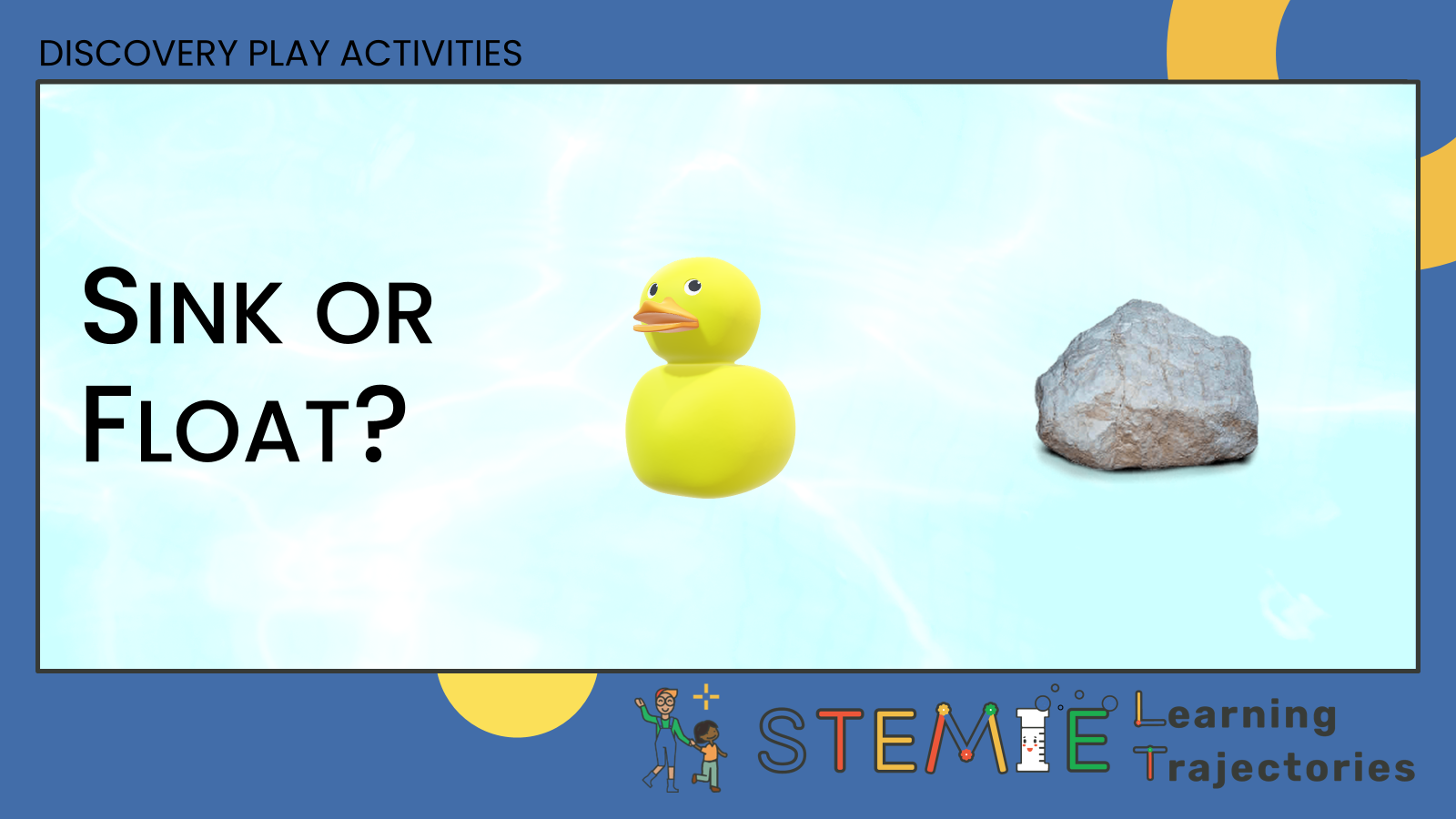
Discovery Play Activities with Your Young Child: Sink or Float?
Description
Help your child make predictions by testing the density and buoyancy of objects at bathtime or provide a sensory bin with some water. Through fun-filled observations and experiments, your child will learn that buoyant objects float, and dense objects sink.
Environment
- Introduce objects one at a time to help children stay focused
- Put materials within reach for the child
- Use modified or flexible seating
Materials
- Have child’s assistive technology ready and available, including augmentative & alternative communication (AAC) device
- Use items that are easier to grasp and manipulate
- For children with physical disabilities with fine motor/grasping needs, consider using tools/assistive devices (e.g., grabber, reacher)
Instruction
- Use a variety of methods of communication (e.g., sign language, gestures) to meaningfully engage children
- Use pictures and/or icons to signal next steps (you may want to laminate or cover with tape or contact paper to protect them from water)
- Provide hand-over-hand or hand-under-hand assistance while testing
- Model and demonstrate how to interact with objects
